
The Royal Botanic Gardens, Kew has chosen its top 10 species discovered in 2019, celebrating the diversity of plants and fungi. From a bamboo-dwelling medicinal fungi to a snowdrop spotted on Facebook, this year’s picks represent the breadth of discoveries made by Kew and its collaborators around the world every year
Royal Botanic Gardens, Kew
-
1. A snowdrop discovered from a holiday photo uploaded to Facebook
A new snowdrop, Galanthus bursanus, from north-west Turkey was discovered on Facebook when a Turkish paediatrician uploaded her holiday photos. They were spotted by a Ukrainian snowdrop specialist who could see from the picture that they were something special
Photograph: D Zubov/RBG Kew
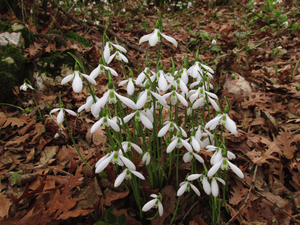
-
2. Sweet, not sour: A new species of ‘miracle-berry’
Synsepalum chimanimani, a new species of ‘miracle berry’ has been discovered in the lowland rainforests of the Chimanimani Mountains on the Mozambique-Zimbabwe border. The miracle berry is a small tree, just four metres in height, with glossy evergreen leaves produced in small bunches. The twigs produce a white rubbery latex when cut
Photograph: Bart Wursten/RBG Kew
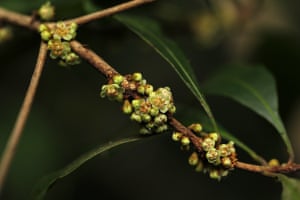
-
3. Doomed by a hydroelectric dam? New ‘orchid’ discovered in a waterfall
Inversodicraea koukoutamba was discovered on a waterfall on the Bafing River in Guinea, west Africa. It has not been found anywhere else. The new species, identified to be in the family known as the ‘orchids of the falls’ is a rubbery seaweed shrub that grows to 20cm tall. Kew scientists expect it to become extinct when construction on a planned hydroelectric project in the area begins in 2020
Photograph: RBG Kew
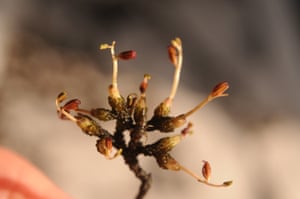
-
4. A bamboo-dwelling medicinal fungus found in China
A medicinal fungus known in China for more than 400 years has been fouond to be a genus as well as a species previously unknown to science. It has now been formally named Rubroshiraia bambusae. The new genus is native to Yunnan in south-west China where it grows on a species of bamboo, forming pink ball-like fruiting bodies. The fungus is used as traditional medicine in the area to treat arthritis and infantile convulsions. However, scientific interest has increased because of the discovery of compounds in the fungus known as hypocrellins
Photograph: Cici Dong-Qin Dai/RBG Kew
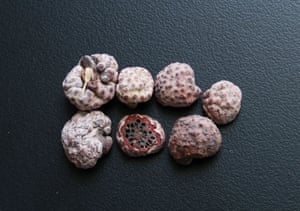
-
5. Ten new species of bears’ breeches found in tropical Africa
Ten new bears’ breeches were found this year in tropical Africa by Kew scientists. Particularly noteworthy are two blue-flowered flower species of Baleria found in Angola: Barleria deserticola and Barleria namba. B deserticola, from the Namib coastal desert, was first collected 160 years ago by the explorer Friedrich Welwitsch, but was only re-found in 2017, finally allowing this species to be named this year by Kew. B. namba only came to light very recently, having been discovered on the previously unexplored Mount Namba
Photograph: Erin Tripp/RBG Kew
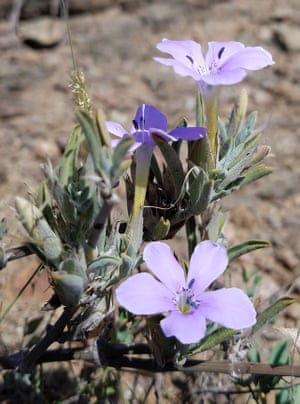
-
6. A bright pink, candy cane-striped violet from New Guinea
A spectacular new species from the African violet family, Cyrtandra vittata, was discovered this year in northern New Guinea. The striking, bright pink candy cane-striped flower grows on a shrub in the rainforest and its white berries are thought to be dispersed by doves and pigeons. The African violet was collected from the wild under permit. Once propagated from cuttings it was discovered to be a new species when it flowered in cultivation
Photograph: Lynsey Wilson/RBG Kew

-
7. Eleven new trees and shrubs found in the Andean forests
Eleven new species of trees and shrubs have been discovered in the Andean forests in South America this year. All 11 are in the plant genusFreziera. These new trees could have many uses. Some of the genus are known to produce compounds that could be of medicinal or biochemical value. Other species have also been proposed as conservatory plants because of their attractive glossy, variously sculptured leaves
Photograph: JG Graham/RBG Kew
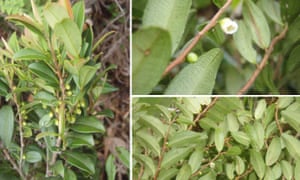
-
8. Endangered by a volcano
Costularia cadetii, a perennial herb, grows on the rims of the volcanoes in Réunion, an island in the Indian Ocean east of Madagascar. The first record of it was collected in 1965 but further material was needed and it was only officially named this year. The herb was named after its collector, Thérésian Cadet, a former teacher and climbing enthusiast. The species is classified as endangered as it is restricted to this high-elevation habitat, which puts it at risk from volcanic activity, fire and climate change
Photograph: J Bruhl/RBG Kew

-
9. A botanists’ love letter: Kew scientist named orange flower after his wife
Found growing on a table-stone mountain in Kounounkan in Guinea is the Gladiolus mariae.The Kew scientist Xander van der Burgt found the vivid orange flower to be restricted to two mountains in the area – the mountains are among the last to remain unaffected by humans. It likes to grow in fire-free habitats and occurs in open vegetation with little grass. Xander decided to name the flower after his wife, Maria
Photograph: Xander van der Burgt/RBG Kew
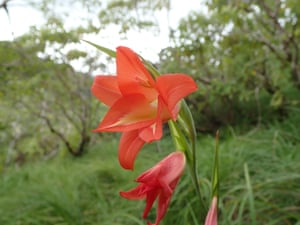
-
10. A rare find: the zonozono tree
With just seven trees known on the planet, zonozono, a 20-metre tree in the ylang ylang family, is perhaps the rarest species discovered this year. It has been identified in a genus previously known only in west Africa and not suspected to be present in the Usambara Mountains of Tanzania in the east of the continent. It is assessed as endangered because of the low number of individuals and threats from pole-cutting and an invasive tree species
Photograph: Andrew R Marshall/RBG Kew
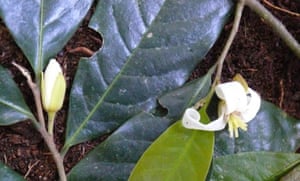
Source Link: https://www.theguardian.com/environment/gallery/2019/dec/17/amazing-new-plants-fungi-discoveries-2019-royal-botanic-gardens-kew-in-pictures